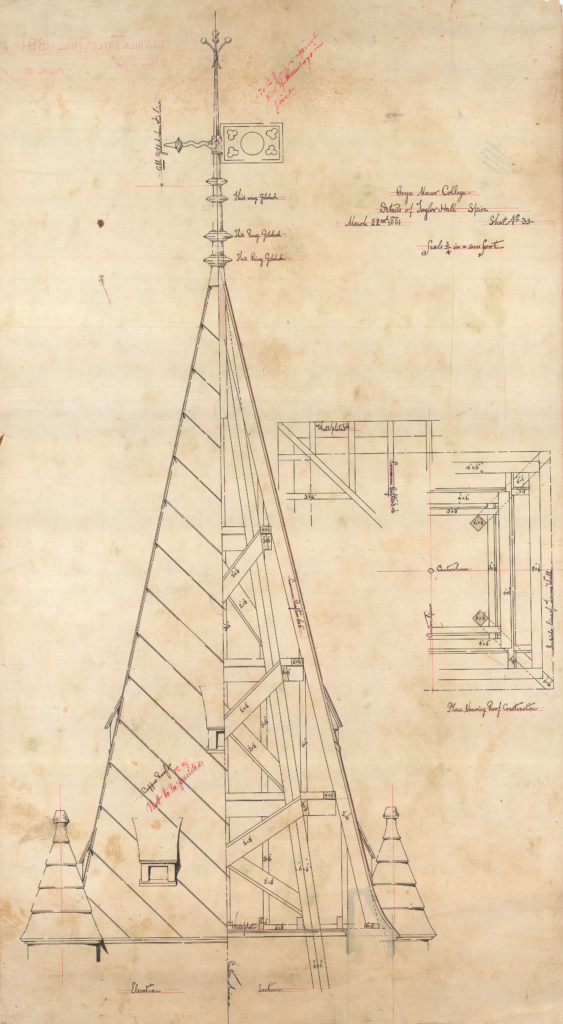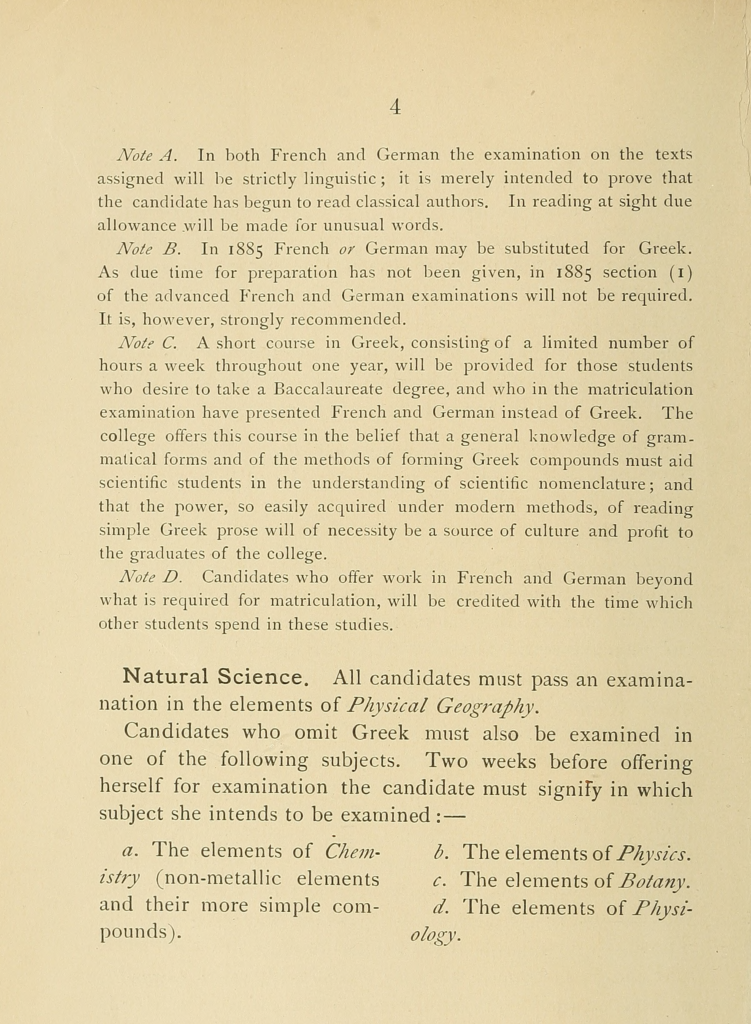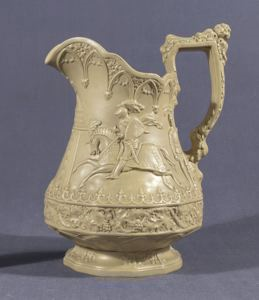As Taylor Hall was nearing completion, plans for the College curriculum changed significantly. Under the leadership of President James Rhoads and Dean of the Faculty M. Carey Thomas, the course of study was aligned with that of elite American universities, which had adopted a European model anchored in Classical and Anglo-Saxon studies, natural science, and mathematics — not Quaker teachings.
These changes moved away from a guarded education and toward worldly subjects. As the curriculum took shape, a Eurocentric, Anglo-Saxonist focus emerged. Exclusively British authors were assigned for the entrance exam, Anglo-Saxon was taught in the English department, and ancient history was narrowed to just Greece and Rome. These modifications affirmed white, Euro-American identities and implicitly promoted settler colonialism and white supremacy.

The copper roof on the tower of Taylor Hall was intended to have elements gilded with gold, and the weathervane flying on the top of the spire incorporates motifs of medieval design. High Victorian Gothic decorative features associate Taylor Hall with wider movements of Gothic revival that sought to place British ancestry and inheritance at the center of white American identity.
“The histories of Greece and Rome are taken as representative of ancient history, those of France and England as representative of medieval and modern history.”
Bryn Mawr College Program, 1885-1886.
“The instruction of English consisted of lectures by Professor [M. Carey] Thomas upon the Study of Language, the reading of some Anglo-Saxon prose texts, together with lectures upon the History of Anglo-Saxon Literature and English Literature…”
James E. Rhoads, Report of the President of Bryn Mawr College, 1886.

[above: timeline graphic]

The Eglinton Tournament, the reenactment of a medieval tournament in Ayreshire, Scotland in 1839, attracted thousands of spectators from all over Britain and spurred popular enthusiasm for medieval revival and Anglo-Saxonism. Once on display in the Deanery (the home of M. Carey Thomas), this jug exemplifies how Anglo-Saxonism informed the decoration of spaces on Bryn Mawr’s campus.
